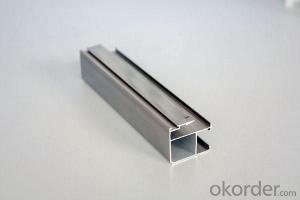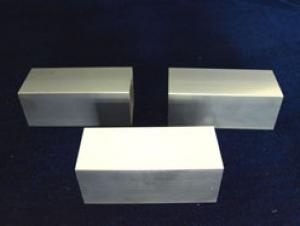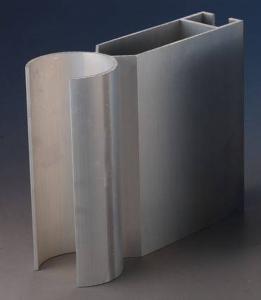White Color Aluminum Threshold Profiles
- Loading Port:
- China Main Port
- Payment Terms:
- TT OR LC
- Min Order Qty:
- -
- Supply Capability:
- -
OKorder Service Pledge
OKorder Financial Service
You Might Also Like
WHITE COLOR ALUMINUM PROFILE
Industrial aluminium profile
1)Material : 6063 6061 6060 and different aluminium alloy
2)Status:T4 T5 T6 or other special status
3)Surface treatment: mill finish, anodized sliver ,anodized bronze, anodized champagne, anodized black pearl, various power coating color, electrostatic sliver, electrostatic champagne, electrostatic golden, electrostatic titanium , machine polish sliver, machine polish bronze, wooden grain color, and Fluorocarbon spraying.
4)Annual capacity : 120000TON
5)Quality : China Nation Standard GB/T 5237 2008 (advanced class)
6)Use: can be widely using aluminium window, door, curtain wall, hand railing , normal aluminium profile, decorative and industrial aluminium profile
7)Advantage: Famous Brand reasonable&market price, soonest delivery and good after sale- service
8)Type of package:protection foam+heat contracted plastic film. / wooden packing / Metal pallet or depand on clientspecial requirement.
9)Payment term:T/T:30% of total value as deposite should paid by T/T within 3 days when confirmation ,and the remaining sum should be paid by T/T before delivery.L/C: 100% at sight
10)Delivery Day: 15-30days
11)Honor : CHINA FAMOUS TRADEMARK, CHINA TOP BRAND, ISO9001-2000, CHINA SQUARE&ROUND COMMITTEE DNV
- Q: Are aluminum profiles suitable for sports equipment?
- Yes, aluminum profiles are suitable for sports equipment. Aluminum is a lightweight and durable material that offers several advantages for sports equipment manufacturing. It is known for its high strength-to-weight ratio, making it ideal for applications that require strength without adding unnecessary weight. Aluminum profiles are commonly used in the production of various sports equipment such as bicycles, golf clubs, baseball bats, tennis rackets, and even in the construction of sports stadiums and arenas. The lightweight nature of aluminum allows athletes to handle the equipment more easily, resulting in improved performance and reduced fatigue during sports activities. Additionally, the durability of aluminum ensures that the equipment can withstand the rigors of intense use and last for a longer time. The versatility of aluminum profiles also makes them suitable for sports equipment. They can be easily shaped, molded, and manipulated into various designs to meet specific performance requirements. This flexibility allows manufacturers to create equipment with the desired characteristics, such as improved aerodynamics, better balance, or enhanced shock absorption. Furthermore, aluminum profiles offer excellent corrosion resistance, which is particularly important for sports equipment that may be exposed to moisture, sweat, or harsh environmental conditions. This property ensures that the equipment remains functional and maintains its performance over time. In summary, aluminum profiles are indeed suitable for sports equipment due to their lightweight, durable, and versatile nature. With their high strength-to-weight ratio, they contribute to improved performance, reduced fatigue, and prolonged lifespan of the equipment.
- Q: Can aluminum profiles be used in the production of laboratory equipment?
- Laboratory equipment manufacturing can utilize aluminum profiles effectively. Aluminum, being a versatile material, finds application in multiple industries, including the production of laboratory equipment. Aluminum profiles provide numerous benefits in this regard. To begin with, aluminum possesses a combination of lightweight and strength, making it an ideal choice for constructing portable or frequently movable equipment within laboratories. Its lightweight nature reduces the strain on laboratory personnel while handling and transporting the equipment. Moreover, aluminum profiles offer easy shaping and molding capabilities, enabling the customization of laboratory equipment to meet specific requirements. This design flexibility allows for the creation of equipment with complex shapes and structures, ensuring optimal functionality and efficiency. In addition, aluminum exhibits excellent corrosion resistance, a crucial property in laboratory settings where exposure to chemicals and liquids is common. This corrosion resistance extends the lifespan of the equipment and maintains its good condition even after prolonged use. Furthermore, aluminum profiles can be anodized or coated to provide additional protection against wear, scratches, and other forms of damage. This enhances the durability and facilitates easier cleaning, ensuring the maintenance of required hygiene standards in laboratories. Lastly, aluminum possesses high conductivity, making it suitable for applications that require heat transfer or electrical conductivity. This property proves advantageous for laboratory equipment, such as heating plates, heat sinks, or electrical circuit components. In conclusion, aluminum profiles are indeed suitable for the production of laboratory equipment. Their lightweight, malleable, corrosion-resistant, and conductive properties make them an excellent choice for manufacturing various types of laboratory equipment, guaranteeing durability, functionality, and ease of use.
- Q: What is the difference between 6063-T5 and 6061-T6 aluminum profiles?
- 6063 Aluminum Alloy belongs to Aluminum Alloy heat treatment, the main alloying elements as magnesium and silicon, the main strengthening phase is Mg2Si, with moderate strength, high corrosion resistance, no stress corrosion cracking tendency, good welding performance and corrosion resistance of weld zone constant etc.. The aluminum alloy has wide quenching range and low sensitivity to quenching temperature, and the thin-wall parts can be realized by wind quenching (strong wind cooling). Alloys are widely used in the frame and load-bearing panels of the construction and automotive industries. There is a relatively large tendency of over ageing in the welding process of this alloy. The direct reason is that the strengthening phase has been changed by the temperature.
- Q: What is the difference between aluminum profile and sheet metal?
- Aluminum extrusions can be produced by extrusion or casting. In contrast, the aluminum sheet is flat, mainly for all types of surface.
- Q: This question asks for the various types of adhesives that can be used for bonding aluminum profiles to building structures.
- <p>There are several types of adhesives used to attach aluminum profiles to building structures, including epoxy adhesives, which offer high strength and resistance to chemicals and temperature changes; polyurethane adhesives, known for their flexibility and durability; acrylic adhesives, which provide good adhesion on a variety of surfaces and are resistant to UV light; and silicone adhesives, which are excellent for sealing and bonding in environments with fluctuating temperatures. Each adhesive type has specific properties that make it suitable for different applications and environmental conditions in construction.</p>
- Q: What are the advantages of using aluminum profiles in transportation vehicles?
- There are several advantages of using aluminum profiles in transportation vehicles. Firstly, aluminum is a lightweight material compared to other metals, such as steel. This results in reduced fuel consumption and increased energy efficiency, making it an ideal choice for vehicles that require frequent movement and long distances. The lightweight nature of aluminum also allows for improved maneuverability and handling, enhancing the overall performance of the vehicle. Secondly, aluminum profiles offer excellent corrosion resistance. This is particularly important in transportation vehicles that are frequently exposed to harsh weather conditions and corrosive elements, such as salt and moisture. The corrosion resistance of aluminum ensures the longevity and durability of the vehicle, reducing maintenance and repair costs. Furthermore, aluminum profiles are highly recyclable. The recycling process of aluminum requires significantly less energy compared to the production of primary aluminum. This not only helps in reducing greenhouse gas emissions but also contributes to the overall sustainability of the transportation industry. The recyclability of aluminum also makes it an environmentally friendly choice, aligning with the growing focus on eco-friendly practices. Additionally, aluminum profiles offer great design flexibility. They can be easily extruded into various shapes and sizes, allowing manufacturers to create customized components and structures for transportation vehicles. This flexibility enables the optimization of space and weight distribution, resulting in improved efficiency and functionality. Lastly, aluminum profiles are non-toxic and non-magnetic. This is particularly advantageous in transportation vehicles as it eliminates the risk of interference with sensitive electronic systems and equipment. Aluminum's non-toxic nature also makes it a safe choice for the transportation of food and other sensitive materials. In conclusion, the advantages of using aluminum profiles in transportation vehicles are numerous. Its lightweight, corrosion resistance, recyclability, design flexibility, and non-toxic properties make it an ideal material choice for enhancing fuel efficiency, durability, sustainability, and overall performance in the transportation industry.
- Q: Are aluminum profiles suitable for medical equipment?
- Indeed, medical equipment finds aluminum profiles to be highly suitable. Aluminum, being a material that is both lightweight and strong, exhibits exceptional resistance to corrosion, thereby rendering it exceptionally appropriate for deployment in medical equipment. The ease with which aluminum can be transformed into diverse profiles and shapes further enhances its ability to meet specific demands. Moreover, aluminum possesses non-toxic, non-magnetic characteristics, and can be readily sterilized, thus rendering it completely safe for employment in medical settings. Furthermore, its capacity to withstand wear and tear, along with its durability, further amplifies its suitability for medical equipment, thereby ensuring extended and dependable functionality.
- Q: Who can tell me the latest national standard for aluminum and the latest edition, -2008?
- Standard number: GB 21351-2008Standard Name: energy consumption quota for aluminum alloy building profile products per unitStandard status: currentEnglish: The, norm, of, energy, consumption, per, unit, product, of, wrought, aluminium,, alloy, extruded, architecture, profiles, for,...Date of implementation: 2008-6-1Promulgated by the Ministry of State Administration of quality supervision, inspection and Quarantine of the People's Republic of China, China National Standardization AdministrationBrief introduction: this standard specifies the Aluminum Alloy profile building energy consumption per unit product of the technical requirements, the scope of statistics and calculation method, calculation range and energy saving management measures. And the calculation and assessment of this standard applies to the enterprise energy consumption per unit product of Aluminum Alloy section building, and the consumption of the new project control.
- Q: What are the differences between standard and non - standard shapes?
- This is not an exact statement for aluminum standard and non - standard, if only to meet the standards is not comprehensive, such as building materials and industrial aluminum profiles of the points, take the building materials, building materials have Aluminum Alloy standard GB5237.1-6-2008, in this standard, the size of section tolerance, mechanical properties, surface treatment quality by grade are made clear, such as the wall thickness profiles allow positive and negative tolerance. The provisions of the standard aluminum doors and windows, for aluminum windows, the wall thickness must be greater than 1.4mm, used for aluminum doors, and its wall thickness must be greater than 2mm. Thus, the aluminum should be standard and non-standard argument, but the qualified and unqualified products, for material strength, surface treatment quality, form and position tolerance must meet the standard requirements for wall thickness according to the thickness of the corresponding use of selected aluminum.
- Q: How do aluminum profiles perform in electrical insulation applications?
- When it comes to electrical insulation applications, aluminum profiles typically do not excel. Unlike plastic or rubber materials, aluminum conducts electricity and lacks the necessary insulating properties to hinder the flow of electric current. Consequently, employing aluminum profiles for electrical insulation applications entails substantial hazards, including the potential for electric shock or short circuits. It is crucial to opt for materials explicitly engineered for electrical insulation purposes, such as insulating plastics or rubber, to guarantee the safety and efficacy of electrical systems.
Send your message to us
White Color Aluminum Threshold Profiles
- Loading Port:
- China Main Port
- Payment Terms:
- TT OR LC
- Min Order Qty:
- -
- Supply Capability:
- -
OKorder Service Pledge
OKorder Financial Service
Similar products
Hot products
Hot Searches
Related keywords

























